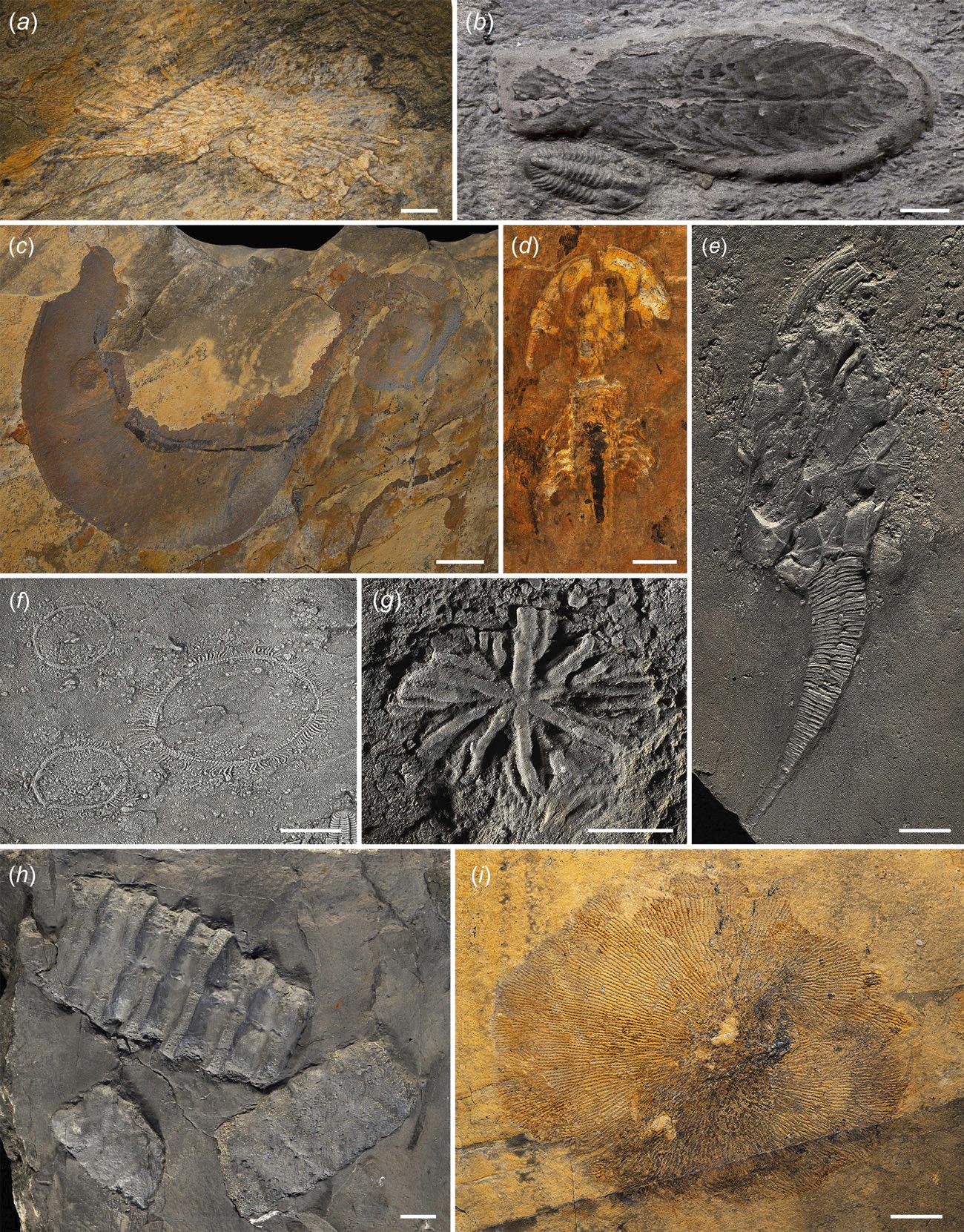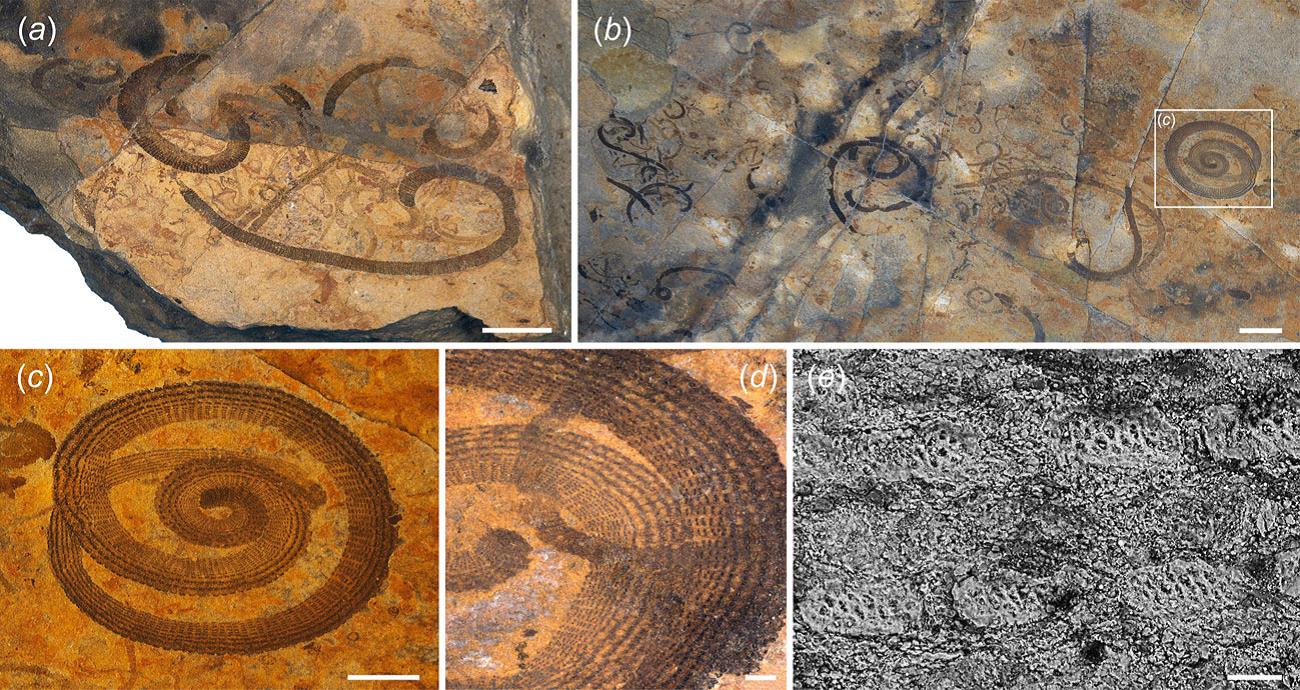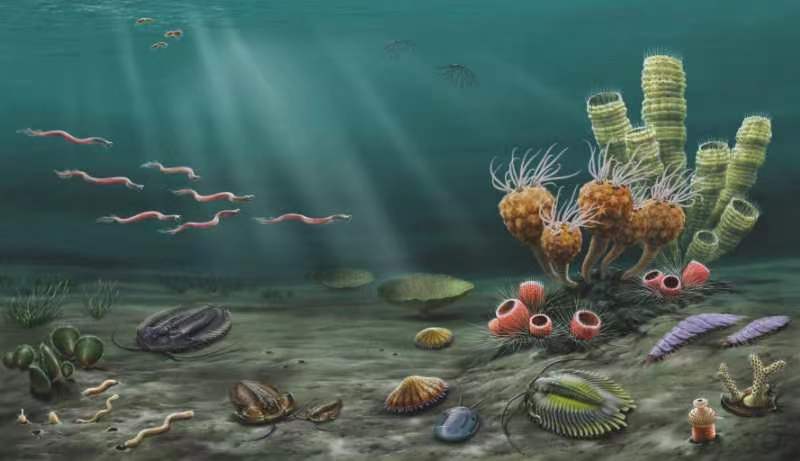In the 1980s, the famous palaeontologist Prof. Sepkoski proposed the diversity curve of the marine animal, recognized three evolutionary faunas, and proposed the concept of Ordovician radiation. From the beginning of the Ordovician, marine life started its great radiation, as manifested by the rapid appearance of new orders, families, and genera, together with the replacement of existing groups. The Great Ordovician Biodiversification Event (GOBE) constructed the essential framework of the Palaeozoic Evolutionary Fauna, while the Cambrian faunas dominated by the arthropods were replaced by the Palaeozoic faunas represented by the filter feeders and reef-forming organisms.
GOBE was primitively studied and defined with the skeletonized taxa, rather than the non-mineralized taxa. The exceptionally preserved Lagerstatten have been assessed as reflecting the living community, providing new evidence to know the Ordovician marine world. However, only several Ordovician Lagerst?tten have been discovered before, especially in the Early Ordovician. Recently, a new Lagerstatte, Liexi fauna, was reported by the research team from Nanjing Institute of Geology and Palaeontology, Chinese Academy of Sciences (NIGPAS), Hunan Museum and Central South University, from the Lower Ordovician of Yongshun country, Hunan Province. This work has been published online in Proceedings of the Royal Society B.
The Liexi fauna has been discovered from the Madaoyu Formation of Lower Ordovician near the Liexi village, Yongshun county, Hunan Province. The conodont and graptolite assemblages indicate an age of mid-Florian, Early Ordovician, which is slightly younger than the Fezouata biota from Morocco and the Afon Gam biota from Welsh. Most of the documented fossiliferous Early Ordovician Lagerstatten globally are interpreted to occur in high latitude regions, such as the Fezouata biota near the South Pole, and the Afon Gam biota from North Wales at a palaeolatitude of 60°S. During the Early Ordovician, South China was thought to be a typical tropical palaeogeographical setting. In contrast to some other Ordovician Lagerstatten preserved in restricted or anoxic environments, the depositional environment of the Liexi fauna is interpreted to be offshore to the lower shoreface, following the palaeogeographic setting.
The Liexi fauna includes up to 11 phyla of marine animals. The fauna is characterized by abundant, diverse biomineralized fossils along with the exceptional preservation of some non-mineralized tissues and groups. In addition to rich palaeoscolecidans and diverse trilobites (including the digestive tract preservation), the fauna also contains graptolites, extraordinarily complete echinoderms, exceptionally-preserved sponges, possible Ottoia, machaeridian polychaetes, and other rare biomineralized specimens, signalling a flourishing Early Ordovician marine fauna. A biologically complex and complete marine ecosystem with diverse organisms and varied lifestyles is proposed here, including endobenthic, sessile benthic, mobile benthic, nektonic, and planktic taxa.
Any discoveries of Early Ordovician Lagerstatten are of significant concern for the research on the Cambrian to Ordovician faunal transition. The Liexi fauna is suggested as the age of middle Floian, probably preceding the GOBE’s primary interval of diversification by ~5–10 Myr. The reconstructed complex ecosystem based on the present Liexi fauna provides new evidence for the significant biotic turnover from Cambrian to the Palaeozoic evolutionary faunas, by showing a mixture of Cambrian relics, and the Ordovician new arrivals.
This research is supported by CAS Strategic Priority Research Program (B) and National Nature Science Foundation of China.
Reference: Fang, X., Mao, Y.Y., Liu, Q., Yuan, W.W., Chen, Z.Y., Wu, R.C., Li, L.X., Zhang, Y.C., Ma, J.Y., Wang, W.H., Zhan, R.B., Peng, S.C., Zhang, Y.D., Huang, D.Y.*, 2022. The Liexi fauna: a new Lagerstatte from the Lower Ordovician of South China. Proceedings of the Royal Society B, 289: 20221027. https://doi.org/10.1098/rspb.2022.1027.

Fossils from the Liexi fauna

Palaeoscolecidan worms from the Liexi fauna

Ecological reconstruction of the Liexi fauna (Drawn by J. Sun)
Contact:
LIU Yun, Propagandist
Email: yunliu@nigpas.ac.cn
Nanjing Institute of Geology and Palaeontology, Chinese Academy of Sciences
Nanjing, Jiangsu 210008, China
Download:
